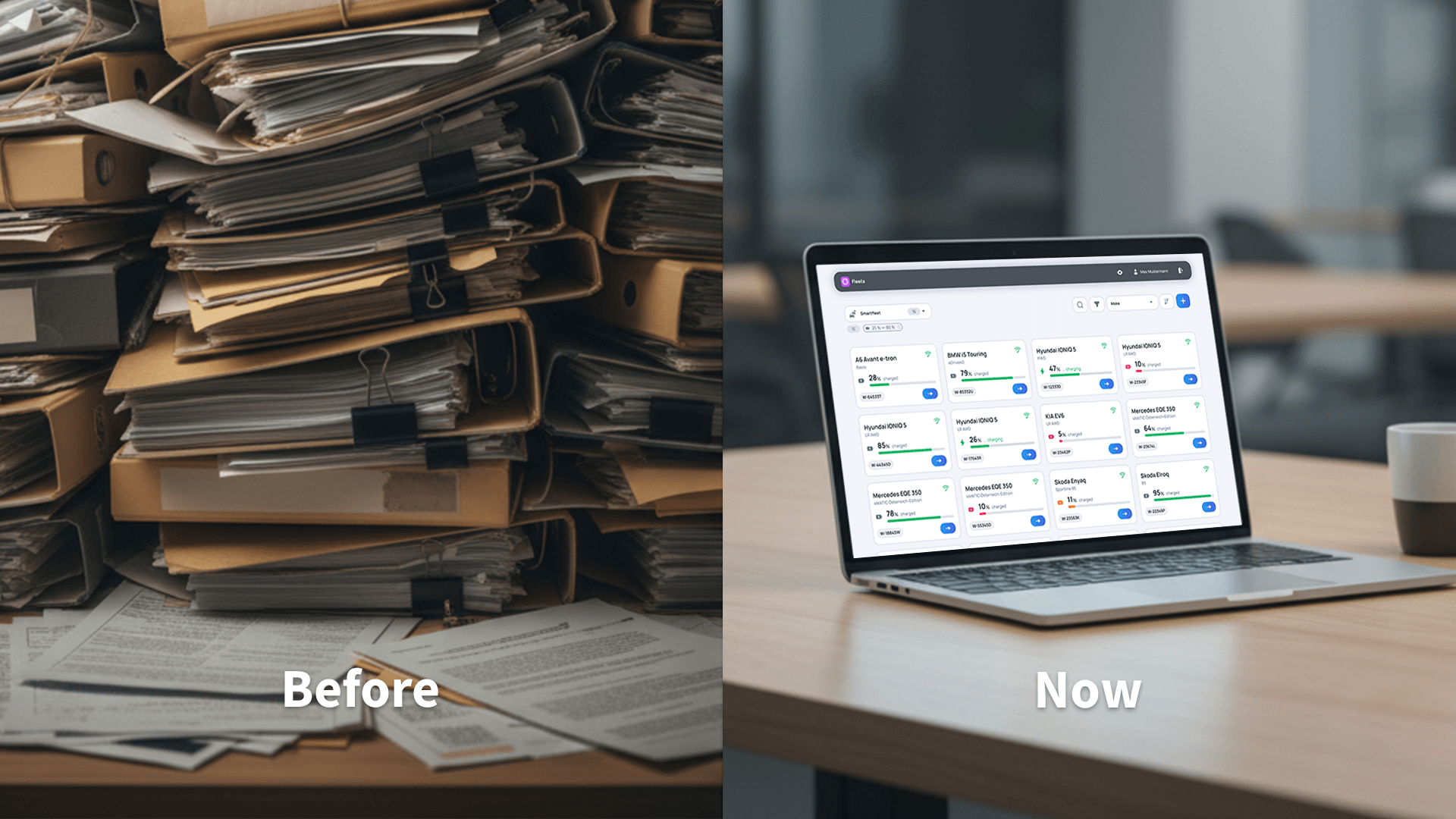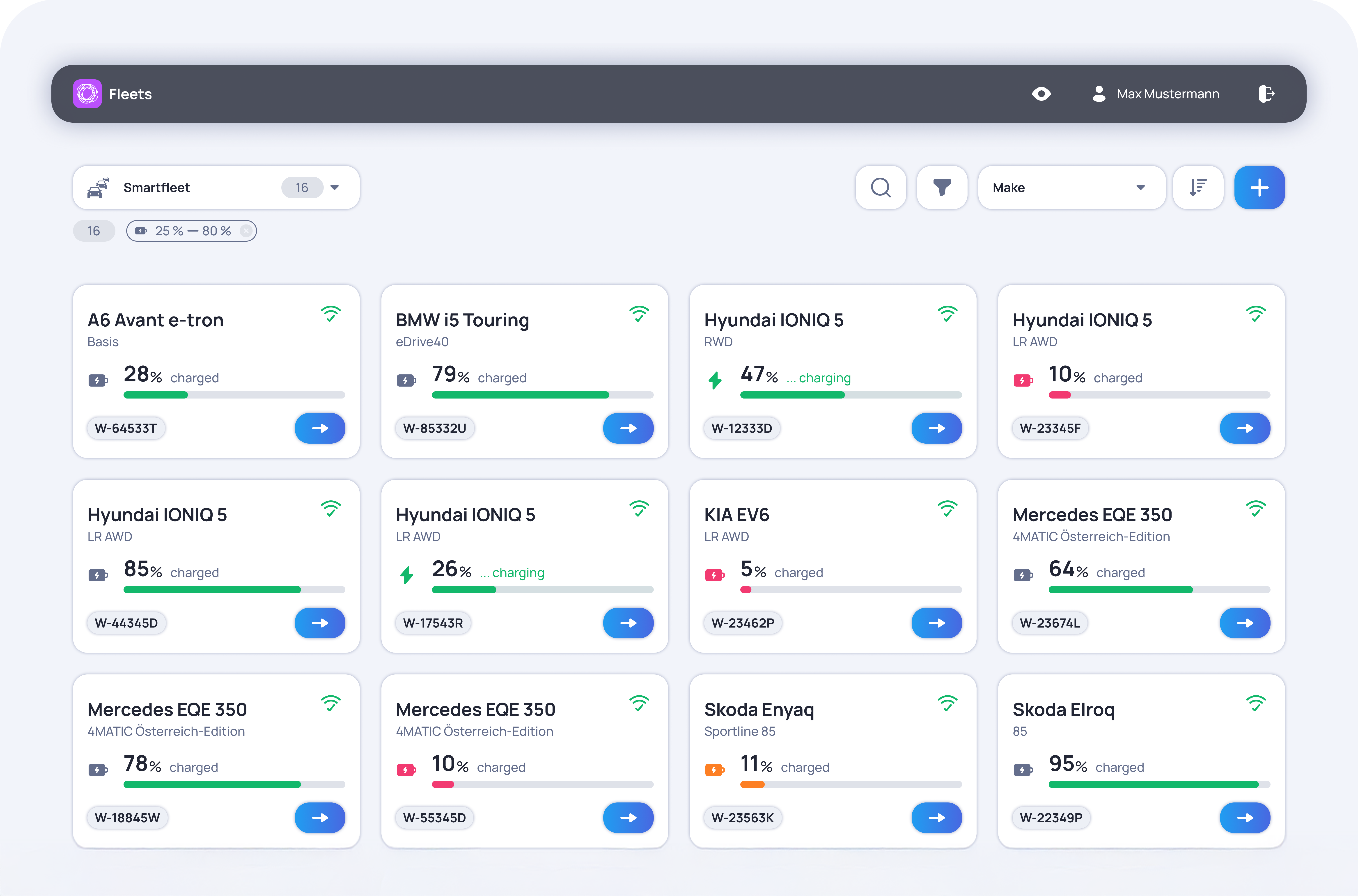If you manage a fleet, you know the pain - vehicle data exists, but it’s scattered across different systems and saved in incompatible formats, which makes using that data far harder than it should be. The result is wasted time, missed signals and teams spending hours checking facts instead of improving operations.
The landscape is changing. New regulations and practical standards - for example the EU Data Act, which gives vehicle owners the right to access data generated by their vehicles, and DATEX II, which standardizes charging data - are creating a clear legal foundation for collecting and exchanging information. Compliance matters, of course. The real challenge is turning regulations and standards into software that actually improves operations. This means translating legal and technical requirements into stable, maintainable systems that deliver day-to-day value.
Here’s how to take control - what’s changed, what “having control” really means, and how it can be achieved in practice.
Before vs now
- Before: each manufacturer, telematics provider and charging operator used their own formats and processes. Integrations were point-to-point. Getting the same metric from several sources meant writing multiple separate solutions. Switching a supplier often meant extra integration work, and matching invoices to sessions often required manual checks. This left teams reacting to problems instead of planning improvements.
- Now: regulations and data profiles like the EU Data Act and DATEX II provide a shared rulebook for exchange. That makes integrations easier and removes many internal roadblocks. As a result, teams can focus on turning data into useful automations and insights instead of rebuilding connectors or repeatedly fixing the same issues. The key challenge that remains is combining legal compliance with solid technical implementation.

What being in control means
Control is not a slogan - it’s a set of concrete capabilities operations you can rely on:
- Consistent data sources - predictable, repeatable feeds in formats that plug into your systems or apps. Consistency means fewer surprises when a provider changes a field or format.
- Clear access rules - transparent policies defining who can access what, and at what level. Clear rules reduce disputes, simplify audits and let teams grant or revoke access quickly.
- One source of truth - a single, unified dataset that everyone uses, so drivers, ops and finance all work from the same numbers and avoid discrepancies.
When these pieces are in place, reporting, incident response and automation become simpler and faster. Teams can build reliable workflows and scale processes with confidence.

MaaS in action - practical software that delivers
This can be achieved through:
- Reliable data foundation - pulling data from manufacturers’ backends, telematics providers and charging operators and mapping it into a single canonical model so each vehicle has the same data representation across systems. This reduces confusion and makes downstream processing straightforward.
- Regulatory-ready systems - building solutions aligned with the EU Data Act and DATEX II, often ahead of enforcement. Proactive compliance reduces future rework and makes later adjustments easier
- AI to support teams - applying AI to reduce manual work and flag risks early - for example notifying you of vehicle conditions that might shorten service life, estimating tyre wear from mileage and replacement data, and assisting with ticketing and post-incident reports. Proposed automations remain under user control and are designed to support teams, not replace them.
- Operations-first delivery - focusing on practical outcomes so teams spend less time hunting for information and more time improving processes. Success can be measured by fewer manual checks, faster incident resolution, and shorter processing times.
Regulation in a nutshell - Data Act and DATEX II
- Data Act - grants the vehicle owner (or an appointed company) the right to access data generated by the vehicle. In practice you can request raw or pre-processed reads useful for operations - for example battery state or basic alerts - rather than vendor-specific advanced analytics. The key point is that you get continuous access to data instead of one-off exports, so monitoring and daily operational integrations become practical.
- DATEX II - a common exchange format for charging data. Publishing locations, statuses and tariffs in a DATEX II-compatible format means partners and systems read your data the same way, which lowers integration effort and reduces manual data corrections.
Compliance with the Data Act and DATEX II means that mobility providers can work with vehicle and charging data in a clear and organised way. This makes it possible to connect the data directly into dashboards, billing tools or customer apps, reducing the need for manual fixes. For the business, this translates into smoother daily operations, faster response to issues and a better customer experience, while also lowering integration costs and saving team time.
How we work with you
We offer flexible ways of working together - from app integrations, through custom feature development, to full smartmove adoption. Each model is designed to deliver quick, measurable results.
Explore our collaboration models: https://hotsource.at
Connect with me
I’m Michael Springsits, CEO & CTO at HOTSOURCE. With a deep background in software engineering and a strong focus on mobility, I combine hands-on technical expertise with strategic vision. In a short call, I’ll learn your priorities, share my take on current mobility and technology trends, and outline practical ways to turn complex challenges into real operational value. Book a slot to connect.
References
- Guidance on vehicle data (Data Act) - European Commission.Digital Strategy for Europe
- Data Act (overview / factpage) - European Commission.Digital Strategy for Europe
- DATEX II - EV Charging user domain / RRPs. datex2.eu

